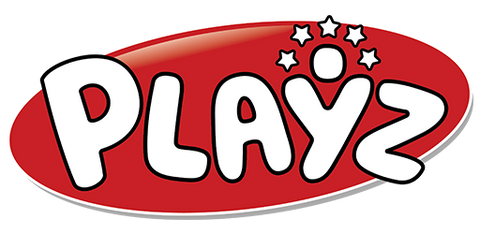
Top 8 Emotional Intelligence Activities for Kids to Build Lifelong Skills
In a world often focused on academic scores, a critical skill for lifelong success and happiness can be overlooked: emotional intelligence (EQ). EQ isn't about ignoring grades; it's about adding a vital set of tools to a child's developmental toolkit. It's the ability to recognize, understand, and manage our own emotions, and to recognize, understand, and influence the emotions of others.
Children with higher EQ are better equipped to navigate social complexities, handle big feelings without getting overwhelmed, and build stronger, healthier relationships. But how do you teach something so abstract? The answer is simpler and more fun than you might think: through purposeful play and connection. This guide provides 8 powerful and engaging emotional intelligence activities for kids that transform learning into an adventure.
From acting out feelings in a game of charades to creating a personal 'feelings thermometer,' these practical exercises will give your child the vocabulary and strategies they need to thrive emotionally. This isn't just about managing tantrums; it's about laying a foundation for a resilient and fulfilling life. Let's dive into how you can make emotional learning a joyful and natural part of your daily routine.
1. Emotion Charades
Emotion Charades is a playful and interactive game that turns the complex task of understanding feelings into a fun, physical activity. Children take turns acting out an emotion without speaking, using only facial expressions and body language, while others try to guess the feeling. This simple yet powerful exercise is one of the most effective emotional intelligence activities for kids because it directly builds the ability to recognize and interpret non-verbal cues.
By embodying emotions like excitement, frustration, or shyness, kids develop a deeper, more personal understanding of how these feelings manifest physically. This kinesthetic learning helps them not only identify emotions in others but also become more aware of their own emotional states.
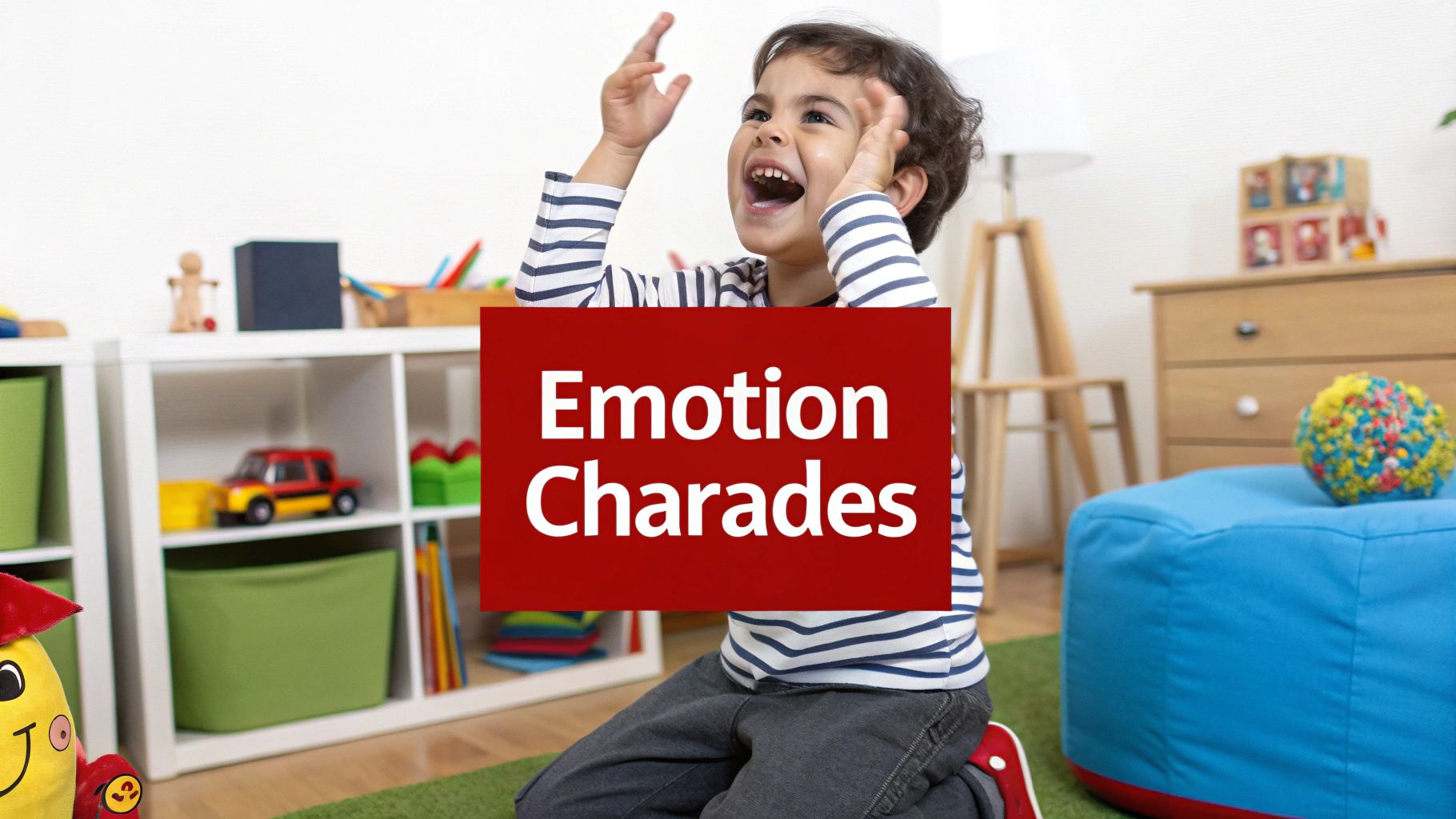
How to Implement Emotion Charades
This game requires minimal setup and can be adapted for various settings, from a family game night to a classroom morning meeting.
- Materials Needed: Emotion cards (homemade or printed), a timer (optional).
- Age Recommendation: 4+ years.
- Best For: Developing empathy, recognizing non-verbal cues, and building emotional vocabulary.
The goal is to create a supportive environment where children feel safe expressing a wide range of emotions. For instance, a teacher might use it during circle time to discuss the day's feelings, while a therapist could use it in a group session to explore more complex emotions in a non-threatening way.
Actionable Tips for Success
To maximize the benefits of Emotion Charades, consider these strategies:
- Start Simple: Begin with basic emotions like happy, sad, angry, and scared, especially for younger children. Use cards with clear illustrations of facial expressions.
- Discuss the "How": After each correct guess, ask, "What clues did you see? How did you know they were feeling disappointed?" This reinforces the connection between physical actions and emotions.
- Add Scenarios: For older kids, increase the challenge by adding context. Instead of just "nervous," try "nervous before giving a speech" to encourage more nuanced portrayals.
- Praise Effort: Celebrate both the actor's performance and the guesser's attentiveness. This builds confidence and encourages participation.
Key Insight: The true learning in Emotion Charades happens in the post-guess discussion. Talking about the "why" behind the physical cues helps solidify a child's understanding of emotional expression.
By integrating games like these, you can transform abstract concepts into tangible skills. For more ideas on how educational games can foster development, you can explore some of the best learning games for kids.
2. Feelings Journal or Emotion Diary
A Feelings Journal, also known as an Emotion Diary, is a dedicated space where children can regularly record their emotions, thoughts, and daily experiences. This reflective practice is one of the foundational emotional intelligence activities for kids, as it teaches them to pause, identify what they are feeling, and understand the "why" behind their emotions. Children can write, draw, or use stickers to express themselves, creating a private and safe space for emotional exploration and processing.
By consistently documenting their feelings, kids begin to recognize patterns in their emotional responses and develop crucial self-awareness. This simple act turns abstract feelings into concrete entries they can reflect on, helping them build a rich emotional vocabulary and learn healthy coping mechanisms over time.
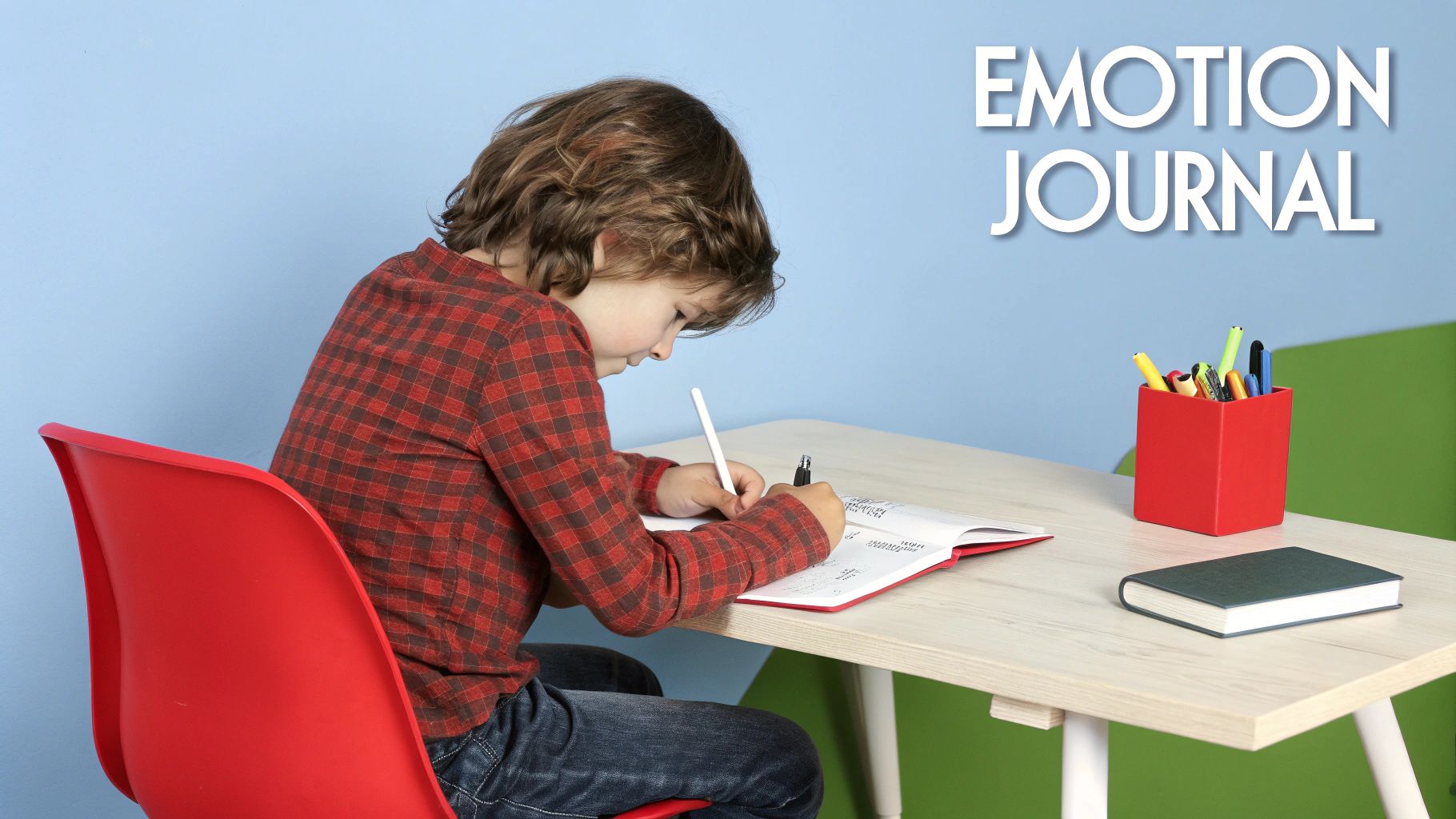
How to Implement a Feelings Journal
Integrating a Feelings Journal into a child's routine can be a calming daily ritual that supports their emotional growth. It is highly adaptable for both home and school environments.
- Materials Needed: A notebook, pens, crayons or markers, stickers (optional).
- Age Recommendation: 5+ years.
- Best For: Developing self-awareness, emotional regulation, and processing complex feelings.
The goal is to establish a judgment-free routine where the child feels comfortable expressing their full range of emotions. For instance, a teacher might start the day with a "Morning Mood" entry, while a parent could use it as a quiet wind-down activity before bed to discuss the day's highs and lows.
Actionable Tips for Success
To make journaling a positive and effective habit, consider these strategies:
- Make it Theirs: Let children pick out and decorate their journal. This ownership makes the activity more personal and inviting.
- Use Prompts: For kids who are unsure where to start, offer gentle prompts like, "What was the best part of your day and how did it make you feel?" or "Today I felt ___ because ___."
- Embrace Visuals: For younger children, or those who prefer drawing, encourage them to sketch their feelings. Emotion face stickers or creating a color code for different moods can also be very effective.
- Review Together (with permission): Offer to look through the journal together weekly. This can open up conversations about recurring feelings or challenging situations.
Key Insight: A Feelings Journal is a tool for validation, not correction. The primary rule is that all feelings are okay to record. This non-judgmental approach builds trust and encourages honest self-expression.
This practice also strengthens the hand and finger muscles needed for writing. For more ways to support this development, you can explore activities that show you how to improve fine motor skills.
3. Emotion Regulation Thermometer
The Emotion Regulation Thermometer is a powerful visual tool that helps children understand the intensity of their feelings and connect them to specific coping strategies. It functions like a temperature gauge, using numbers (e.g., 0-10) or colors (e.g., green for calm, yellow for agitated, red for overwhelmed) to represent different emotional levels. This visual aid makes the abstract concept of emotional intensity concrete and manageable for kids.
This activity is one of the most effective emotional intelligence activities for kids because it empowers them to self-assess their internal state. By learning to "check their temperature," children can proactively choose a calming strategy before an emotion becomes too big to handle, fostering a sense of control and self-awareness.
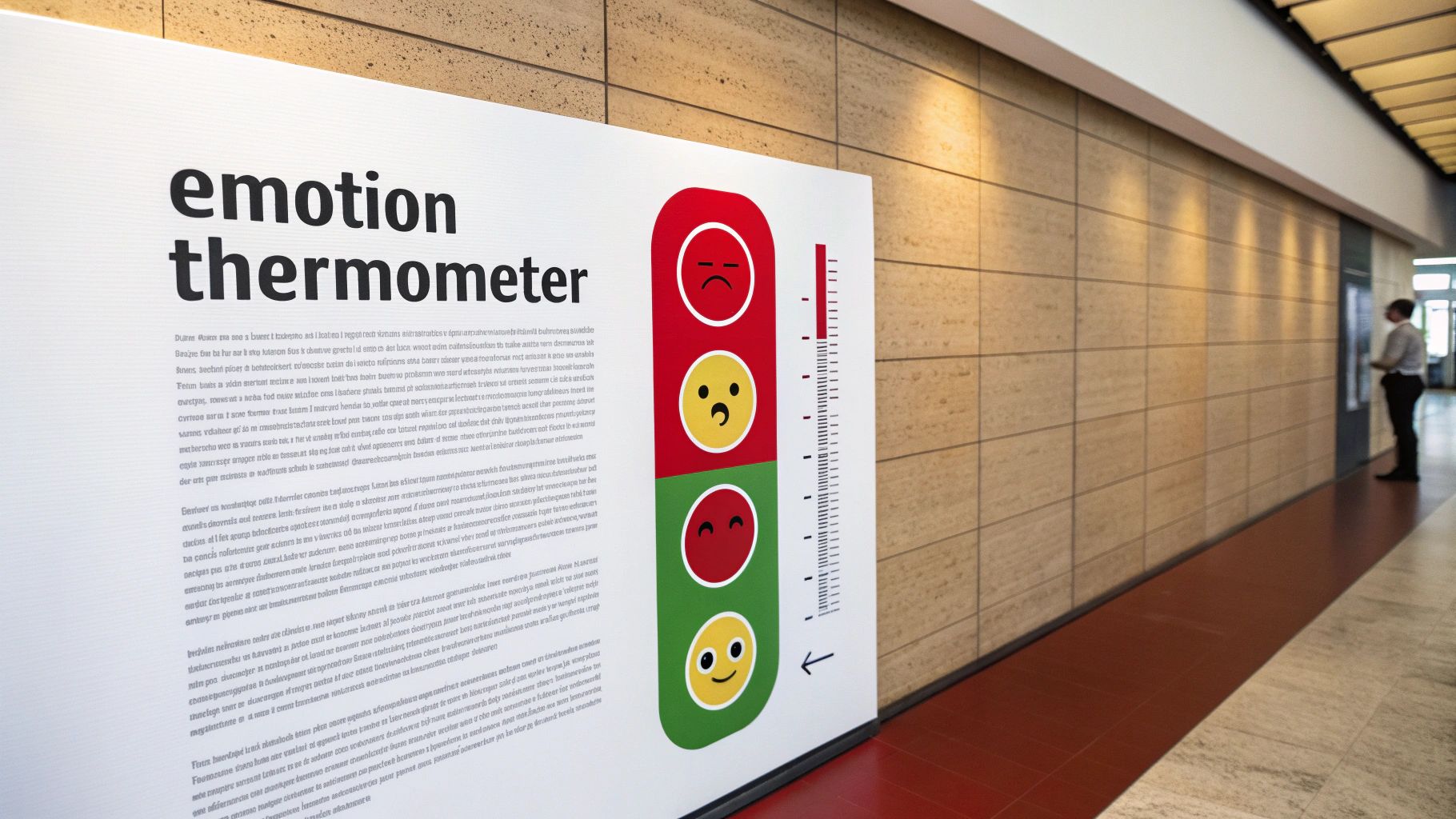
How to Implement an Emotion Regulation Thermometer
This tool is highly adaptable and can be used in various environments, from a refrigerator door at home to a dedicated quiet corner in a classroom.
- Materials Needed: Poster board or paper, markers or crayons, a movable clip or magnet.
- Age Recommendation: 4+ years.
- Best For: Developing self-awareness, learning coping skills, and preventing emotional escalations.
The goal is to create a personalized and accessible resource that a child can turn to independently. For example, a school counselor might co-create a thermometer with a student, linking specific classroom challenges to each level and brainstorming appropriate in-school strategies. This is a core concept in programs like the Zones of Regulation.
Actionable Tips for Success
To get the most out of this tool, introduce and use it thoughtfully:
- Practice When Calm: Introduce the thermometer and practice using it when your child is in a calm, regulated state. This builds a positive association with the tool.
- Create a Strategy Menu: Alongside the thermometer, create a visual menu of coping strategies that correspond to each level. For the "yellow zone," you might list deep breathing or listening to music.
- Model Its Use: Normalize emotional check-ins by using the thermometer yourself. Say things like, "I'm feeling a little yellow right now because I'm frustrated, so I'm going to take a few deep breaths."
- Keep it Simple for Young Kids: For preschoolers, a simple three-zone chart (green/happy, yellow/worried, red/mad) is more effective than a 10-point scale.
Key Insight: The thermometer's true power lies in its ability to connect an internal feeling to an external action. It bridges the gap between "I feel" and "I can do," which is a foundational skill for emotional regulation.
4. Empathy Building Through Storytelling
Empathy Building Through Storytelling is a powerful method that uses narratives to help children step into someone else's shoes and understand their feelings. By listening to stories about characters facing emotional challenges, kids learn to connect with different perspectives and develop compassion. This approach is one of the most foundational emotional intelligence activities for kids because it safely explores complex feelings within the relatable context of a story.
Engaging with characters' joys, fears, and dilemmas helps children build a mental and emotional framework for empathy. They learn to ask "why" someone might feel a certain way, connecting actions to emotional consequences. This practice moves empathy from an abstract concept to a tangible skill they can apply in their own lives.
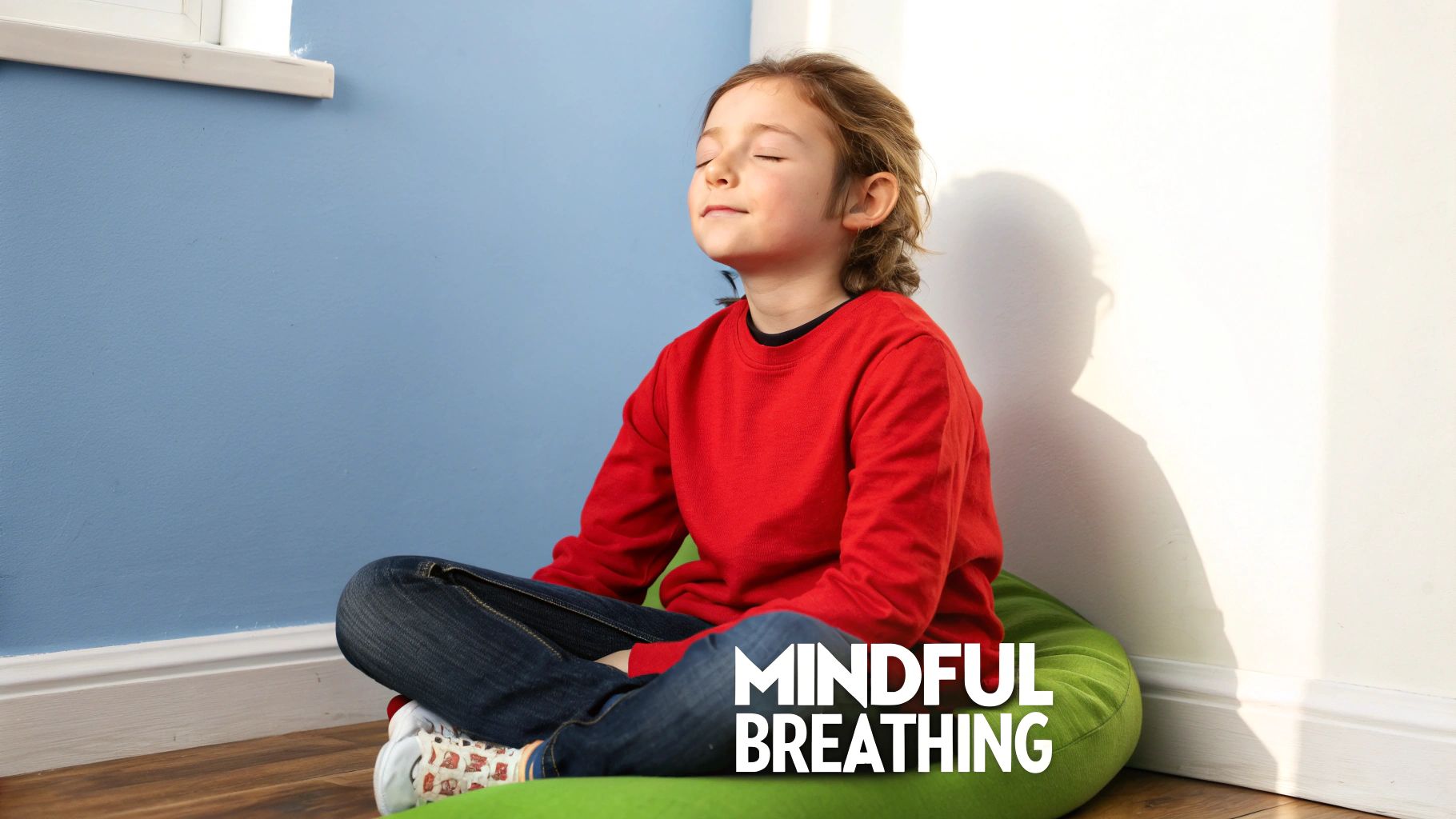
How to Implement Empathy Building Through Storytelling
This activity is highly adaptable and can be used anywhere from a quiet bedtime routine to a structured classroom lesson on social-emotional learning (SEL).
- Materials Needed: Age-appropriate books, story cards, or just imagination.
- Age Recommendation: 3+ years.
- Best For: Developing empathy, perspective-taking, and understanding emotional cause-and-effect.
The goal is to foster curiosity about others' feelings. For example, a teacher might use a book like "The Color Monster" to help preschoolers label their feelings, while a parent could discuss the choices a character makes in a fairy tale to explore themes of kindness and courage.
Actionable Tips for Success
To get the most out of storytelling for empathy, try these focused strategies:
- Ask Open-Ended Questions: Go beyond "What happened?" and ask, "How do you think the wolf felt when the pigs wouldn't let him in? Why do you think he felt that way?"
- Connect to Real Life: Gently link the story to the child's own world. "Remember when you felt nervous on the first day of school? The character might be feeling a bit like that."
- Explore Alternative Endings: Ask, "What if the character had shared their toy instead? How would the story have changed?" This encourages problem-solving and thinking about consequences.
- Use the Illustrations: For younger children, pause to look at the pictures. "Look at the character's face here. What clues tell us they are feeling surprised?"
Key Insight: The real power of storytelling for empathy lies in the conversation it sparks. Pausing to discuss a character's internal world is more important than just finishing the story.
By making stories an interactive dialogue about feelings, you provide a rich foundation for emotional understanding. You can find more ideas for turning everyday moments into learning opportunities by exploring these play-based learning activities to spark curiosity.
5. Mindfulness and Breathing Exercises
Mindfulness and breathing exercises are powerful tools that teach children to anchor themselves in the present moment. By focusing on their breath and bodily sensations, kids learn to calm their nervous systems and manage overwhelming feelings. This practice, ranging from simple "balloon breaths" to guided meditations, is one of the most foundational emotional intelligence activities for kids, providing them with a portable tool for self-regulation.
By consciously slowing their breathing, children can directly influence their physiological stress response, moving from a state of panic or anger to one of calm. This builds an internal locus of control and teaches them that they have the power to manage their reactions, rather than being swept away by intense emotions.
How to Implement Mindfulness and Breathing Exercises
These techniques can be easily integrated into daily routines, requiring no special equipment, just a quiet space and a few minutes of time.
- Materials Needed: None. A cushion or mat is optional for comfort.
- Age Recommendation: 3+ years.
- Best For: Developing self-awareness, stress management, focus, and impulse control.
The goal is to make mindfulness an accessible and positive habit. For example, a teacher could initiate a "Mindful Minute" with deep breathing to help students transition calmly from a high-energy recess to quiet classroom work. Similarly, a parent could use a guided meditation from an app like Headspace for Kids to help a child wind down before bedtime.
Actionable Tips for Success
To make mindfulness a regular and effective practice, consider these strategies:
- Make it Playful: Use engaging names for breathing techniques. Ask children to pretend to smell a flower and then blow out a candle, or practice "bumblebee breath" by humming on the exhale.
- Practice When Calm: Introduce these exercises during peaceful moments, not just during a meltdown. This builds the skill as a positive resource they can draw upon when stressed.
- Start Small: Begin with just one or two minutes of practice and gradually increase the duration as your child's focus and comfort grow.
- Model the Behavior: Practice mindfulness yourself. When children see you taking a deep breath to manage frustration, they learn that it's a valuable and normal coping strategy.
Key Insight: The power of mindfulness lies in its consistency, not its duration. A few focused, positive minutes of practice each day are more effective than infrequent, long sessions.
6. Feelings Face Matching and Emotion Cards
Feelings Face Matching and Emotion Cards are a foundational tool for building a child's emotional vocabulary. This activity uses visual cards depicting various facial expressions, allowing children to connect a specific look with an emotional label. By matching, sorting, or simply discussing these cards, kids learn to identify and name feelings in themselves and others, a core component of emotional intelligence.
This visual and tactile approach makes abstract concepts like "frustration" or "excitement" concrete and understandable. As one of the most versatile emotional intelligence activities for kids, emotion cards serve as a bridge, helping children move from recognizing basic feelings to understanding more complex emotional states.
How to Implement Feelings Face Matching
This activity is highly adaptable and can be used in a one-on-one setting, as a group game, or as a daily check-in tool.
- Materials Needed: A set of emotion cards (store-bought or homemade), a mirror (optional).
- Age Recommendation: 3+ years.
- Best For: Building emotional vocabulary, recognizing facial cues, and self-expression.
The core goal is to provide a non-verbal way for children to explore and communicate feelings. For instance, a preschool teacher might have a "How are you feeling today?" board where children place a card that represents their current emotion, while a speech therapist could use them to help a child articulate feelings they struggle to put into words.
Actionable Tips for Success
To get the most out of emotion cards, integrate them into daily routines with these strategies:
- Create DIY Cards: Make the activity more personal by taking photos of your child's face expressing different emotions. This creates a powerful connection and sense of ownership.
- Play Memory Match: Create two sets of cards and play a classic memory game. This reinforces visual recognition of emotions in a fun, low-pressure format.
- Introduce Nuance: Start with basic emotions (happy, sad, angry) and gradually introduce more complex feelings like "proud," "jealous," or "embarrassed" as the child's understanding grows.
- Use a Mirror: Encourage children to look at the cards and then try to make the same face in a mirror. This kinesthetic practice deepens their understanding of how emotions feel and look.
Key Insight: Emotion cards are not just for identification; they are powerful conversation starters. Use them to ask open-ended questions like, "Can you remember a time you felt this way?" or "What might make someone feel surprised?"
Using visual aids like emotion cards can be particularly effective for children who benefit from hands-on learning. For more ideas on how to engage children through tactile experiences, you can explore some of the essential sensory activities for kids.
7. Problem-Solving and Conflict Resolution Role-Play
Problem-Solving and Conflict Resolution Role-Play is a structured activity where children act out common social conflicts to practice finding peaceful solutions. By stepping into different roles, kids learn to identify problems, understand various perspectives, and brainstorm effective resolutions in a safe, controlled environment. This hands-on approach is one of the most practical emotional intelligence activities for kids because it directly teaches communication and negotiation skills.
Through scenarios like sharing a toy or handling teasing, children move beyond theoretical knowledge and actively practice empathy and self-advocacy. This method builds a mental toolkit of strategies they can draw upon when faced with real-life disagreements, turning challenging social interactions into opportunities for growth.
How to Implement Problem-Solving and Conflict Resolution Role-Play
This activity is highly adaptable and can be used proactively in a classroom or reactively at home to address a specific conflict that has occurred.
- Materials Needed: Scenario cards (optional), a whiteboard or paper to list solutions.
- Age Recommendation: 5+ years.
- Best For: Developing communication skills, practicing empathy, and learning negotiation.
The primary goal is to empower children with a framework for resolving disputes independently. For instance, a school counselor might use this in a social skills group to help children with ADHD practice turn-taking and listening, while a parent could use it to help siblings navigate disagreements over screen time.
Actionable Tips for Success
To ensure the role-playing is effective and builds lasting skills, consider these tips:
- Use Real Scenarios: Base role-plays on actual situations the children have faced (with names changed) to make the practice relevant and meaningful.
- Follow a Framework: Guide children through a consistent problem-solving process: 1. Identify the problem, 2. Brainstorm solutions, 3. Evaluate consequences, and 4. Choose a solution to try.
- Swap Roles: Have children act out the scenario from both perspectives. This is a powerful way to build empathy and understand the other person's feelings and motivations.
- Practice "I Feel" Statements: Coach children to use specific language like, "I feel frustrated when you take the controller because I was in the middle of a game. I need you to ask first."
Key Insight: The power of role-playing lies in rehearsal. By practicing conflict resolution strategies in a low-stakes setting, children build the confidence and muscle memory to apply them effectively during high-emotion, real-world situations.
Equipping children with these skills is fundamental to their social development. To delve deeper into this area, explore these valuable tips on how to develop problem-solving skills.
8. Gratitude Practice and Positive Reflection
Gratitude Practice and Positive Reflection is a powerful habit that shifts a child's focus from what is lacking to what is abundant in their lives. This activity involves regularly identifying and expressing appreciation for the good things, big and small. It's one of the most transformative emotional intelligence activities for kids because it directly cultivates optimism, resilience, and a positive outlook.
By creating a routine around noticing and acknowledging positive experiences, children learn to counteract negativity bias and build a stronger emotional foundation. This practice helps them regulate their emotions by providing a tool to find perspective during difficult moments, fostering a deeper sense of well-being and contentment.
How to Implement Gratitude Practice
This practice is highly adaptable and can be easily woven into daily family or classroom routines without requiring special materials.
- Materials Needed: A simple notebook or jar, slips of paper, pens or markers.
- Age Recommendation: 3+ years.
- Best For: Building resilience, fostering optimism, and improving mood regulation.
The goal is to make gratitude a natural and consistent part of a child's day. For example, a family might share "three good things" that happened during dinner, or a teacher could dedicate a few minutes at the end of the day for students to write one thing they are grateful for on a leaf to add to a classroom "Gratitude Tree."
Actionable Tips for Success
To make gratitude a meaningful and lasting habit, consider these strategies:
- Be Specific: Encourage children to move beyond general statements. Instead of "I'm grateful for my family," guide them toward "I'm grateful that Mom read me an extra story tonight."
- Model It Yourself: Children learn by watching. Share your own genuine gratitude regularly and openly, showing them how it's done.
- Make It Visual: Use a "Gratitude Jar" where kids can deposit daily notes, or create a journal where they can draw or write what they're thankful for. Seeing the collection grow is highly motivating.
- Revisit During Tough Times: When your child is having a hard day, pull out the gratitude jar or journal. Reading past entries can provide a powerful reminder of the good things in their life and offer perspective.
Key Insight: Consistency is more important than quantity. Focusing on just one specific thing to be grateful for each day builds a resilient and positive mindset more effectively than occasional, grand gestures of thankfulness.
Emotional Intelligence Activities Comparison
| Activity | Implementation Complexity 🔄 | Resource Requirements ⚡ | Expected Outcomes 📊 | Ideal Use Cases 💡 | Key Advantages ⭐ |
|---|---|---|---|---|---|
| Emotion Charades | Moderate (group needed, prep cards) 🔄🔄 | Minimal (emotion cards or prompts) ⚡ | Improved emotion recognition and empathy 📊 | Group settings, therapy, schools, icebreakers 💡 | Engages kinesthetic learners; adaptable levels ⭐ |
| Feelings Journal | Low to Moderate (requires literacy, routine) 🔄 | Notebook, writing/drawing tools ⚡ | Enhanced self-awareness, emotional processing 📊 | Individual reflection, therapy, classrooms 💡 | Builds introspection and communication skills ⭐ |
| Emotion Thermometer | Moderate (visual tool prep, training) 🔄🔄 | Visual charts/posters, personal materials ⚡ | Better emotion intensity recognition, self-regulation 📊 | Therapy, classrooms, special education 💡 | Concrete framework for emotion scaling; empowers kids ⭐ |
| Empathy Storytelling | Moderate (book selection, facilitation) 🔄🔄 | Books, stories, art/drama supplies ⚡ | Increased empathy, perspective-taking, emotional vocabulary 📊 | Reading groups, therapy, classrooms 💡 | Safe exploration of emotions via narratives ⭐ |
| Mindfulness/Breathing | Low (minimal setup, repeated practice) 🔄 | None or optional apps/videos ⚡ | Reduced anxiety, improved focus and regulation 📊 | Anywhere, classrooms, therapy, homes 💡 | Scientifically proven calming tool; builds lifelong skills ⭐ |
| Emotion Card Matching | Low to Moderate (cards prep or purchase) 🔄 | Emotion cards (purchased or DIY) ⚡ | Improved emotion identification and vocabulary 📊 | Therapy, classrooms, autism support 💡 | Great for visual/non-verbal learners; systematic ⭐ |
| Conflict Role-Play | High (structured scenarios, facilitation) 🔄🔄🔄 | Scenario scripts, space for role-play ⚡ | Enhanced social skills, problem-solving, communication 📊 | Social skills groups, therapy, camps 💡 | Safe practice for real conflict; builds confidence ⭐ |
| Gratitude Practice | Low (simple routines) 🔄 | Journals, jars, visual aids ⚡ | Increased positivity, emotional resilience, well-being 📊 | Family routines, classrooms, therapy 💡 | Research-backed happiness boost; fosters optimism ⭐ |
Turning Play into Lifelong Emotional Strength
The journey of nurturing emotional intelligence in children is not a race to a finish line but a continuous, rewarding process woven into the fabric of daily life. The collection of emotional intelligence activities for kids we've shared, from the expressive fun of Emotion Charades to the reflective calm of a Feelings Journal, are more than just ways to pass the time. They are powerful tools designed to plant the seeds of self-awareness, empathy, and resilience that will blossom throughout your child's life.
By consistently engaging in these practices, you are building a foundational emotional vocabulary. You are showing your child that all feelings are valid, manageable, and important sources of information. This consistent reinforcement creates a safe, trusting environment where they feel empowered to navigate their inner world and connect meaningfully with others.
Key Takeaways for Lasting Impact
As you move forward, keep these core principles at the forefront of your approach:
- Consistency Over Intensity: Small, regular moments of connection are more effective than infrequent, elaborate lessons. A five-minute breathing exercise before bed or a quick check-in using an emotion thermometer can have a profound long-term impact.
- Model, Don't Just Teach: Children learn emotional regulation by observing the adults around them. When you openly and calmly discuss your own feelings, you provide a powerful, real-world example of emotional intelligence in action. You are their most influential guide.
- Embrace Imperfection: There will be moments of big emotions, meltdowns, and misunderstandings. View these not as failures but as valuable, real-time opportunities to practice problem-solving, empathy, and repair. The goal is progress, not perfection.
Your Role as an Emotional Coach
Ultimately, your most important role is that of an "emotional coach." This means listening without judgment, validating feelings even when you don't agree with the behavior, and guiding your child toward constructive solutions. The activities in this article serve as your playbook, equipping you with practical strategies to turn challenging moments into teachable ones.
By integrating these emotional intelligence activities for kids into your routines, you are giving them an incredible gift. You are equipping them with the essential skills to build strong relationships, manage stress effectively, and approach life's challenges with confidence and a compassionate heart. This investment in their emotional well-being is one of the most significant you can make, creating a legacy of strength that will support them for years to come.
At Playz, we believe that the most profound learning happens when it feels like play. Many of our science kits and creative building sets naturally encourage the collaboration, problem-solving, and communication skills that are central to emotional intelligence. Continue your child's journey of discovery by exploring our engaging, educational toys at Playz and turn every playtime into a powerful learning opportunity.
